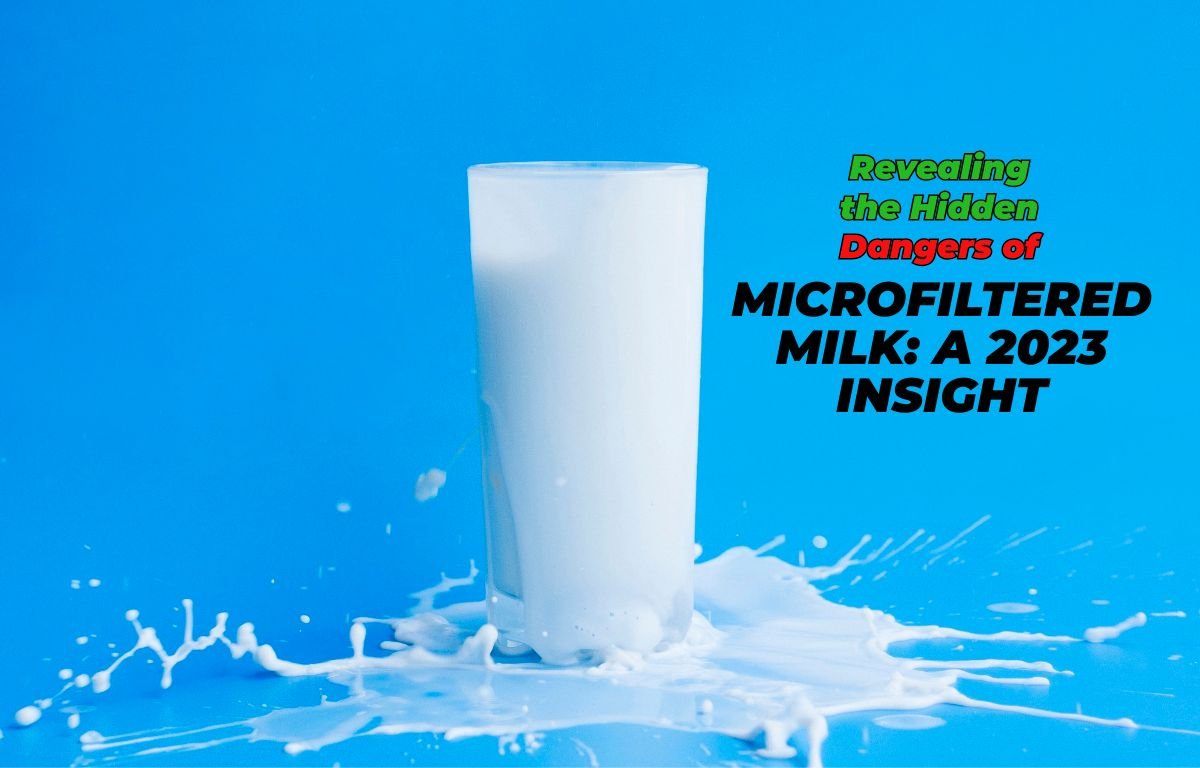Uncovering the Hidden Dangers of Microfiltered Milk
Introduction
In recent years Revealing the Hidden Dangers of Microfiltered Milk: A 2023 Insight, the consumption of microfiltered milk has surged in popularity, touted for its superior taste and extended shelf life. However, a groundbreaking discovery has shed light on a potential spoilage microbe that lurks within this seemingly pristine dairy product. In this article, we delve deep into the world of microfiltered milk to explore the risks associated with this hidden threat and why it’s crucial to stay informed about the products we consume.
Understanding Microfiltered Milk
Microfiltered milk, often marketed as a premium dairy offering, undergoes a specialized filtration process to remove bacteria and impurities, resulting in a smoother texture and a longer shelf life. This process is praised for enhancing the milk’s taste and creaminess, making it a favorite among consumers seeking a higher-quality dairy product.
The Unseen Culprit: Pseudomonas fragi
Behind the scenes, a potentially harmful microorganism known as Pseudomonas fragi has been found in microfiltered milk samples. This microbe, although typically benign, can cause spoilage and lead to off-flavors and odors in the milk, rendering it unfit for consumption. Understanding the potential risks associated with Pseudomonas fragi is paramount to ensuring the safety of microfiltered milk.
How Pseudomonas fragi Thrives
Pseudomonas fragi thrives in cold, oxygen-rich environments, making microfiltered milk an ideal breeding ground. Even with the advanced filtration processes, these resilient microbes can sometimes find their way into the final product. The presence of Pseudomonas fragi can lead to the deterioration of milk quality, resulting in sour and unpleasant flavors.
The Importance of Quality Control
To mitigate the risks associated with Pseudomonas fragi, rigorous quality control measures must be implemented throughout the production and distribution of microfiltered milk. This includes regular testing and monitoring of milk samples for the presence of this spoilage microbe. Proper storage and refrigeration practices are also crucial to maintaining milk freshness and safety.
Ensuring Safe Consumption
Consumers can take proactive steps to ensure the milk they purchase is free from Pseudomonas fragi contamination. Here are some guidelines to follow:
1. Check Expiry Dates
Always check the expiration date on the milk packaging. Avoid purchasing products that are close to or past their expiration date, as these may be more prone to spoilage.
2. Opt for Reputable Brands
Choose microfiltered milk from well-established and reputable dairy brands known for their stringent quality control measures.
3. Proper Storage
Once you’ve purchased microfiltered milk, store it in the coldest part of your refrigerator, ideally at or below 40°F (4°C). This will help inhibit the growth of spoilage microbes.
4. Sensory Evaluation
Before consumption, perform a sensory evaluation of the milk. If you detect any unusual odors or flavors, it’s best to discard the product to ensure your safety.
Conclusion
While microfiltered milk offers undeniable advantages in terms of taste and shelf life, the presence of Pseudomonas fragi reminds us that even the finest products can have hidden risks. By staying informed and following best practices for selection and storage, consumers can continue to enjoy the benefits of microfiltered milk without compromising their health or taste preferences. Vigilance and awareness are the keys to ensuring that the milk in your refrigerator remains a source of pleasure and nourishment rather than an unpleasant surprise Revealing the Hidden Dangers of Microfiltered Milk: A 2023 Insight.
Remember, your choice of microfiltered milk matters, and by being discerning consumers, we can continue to enjoy this premium dairy product without compromising on quality or safety.
